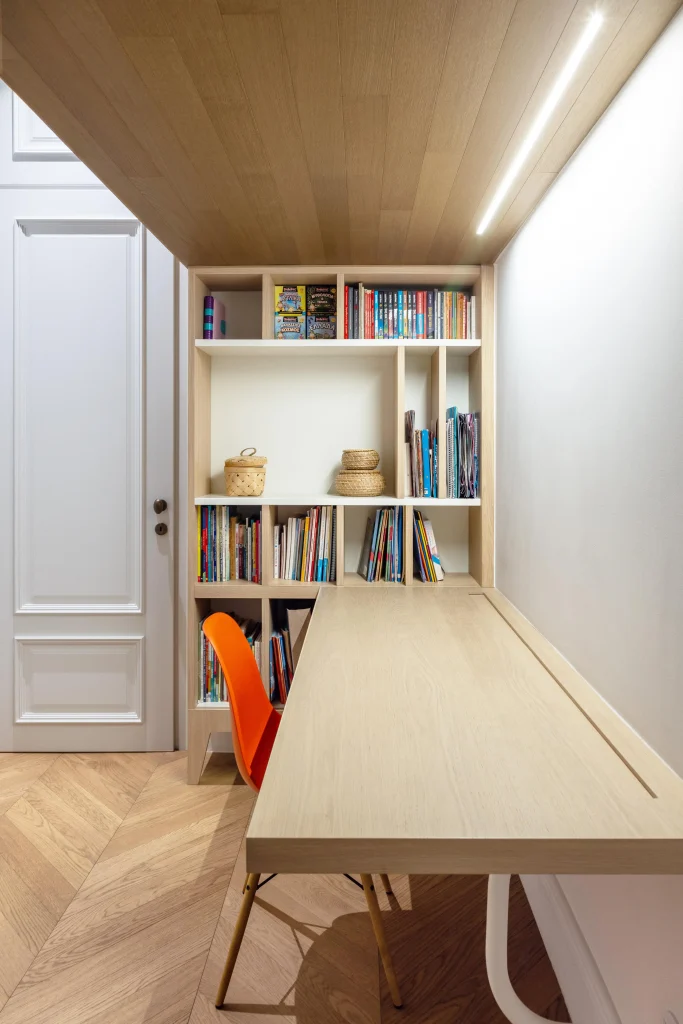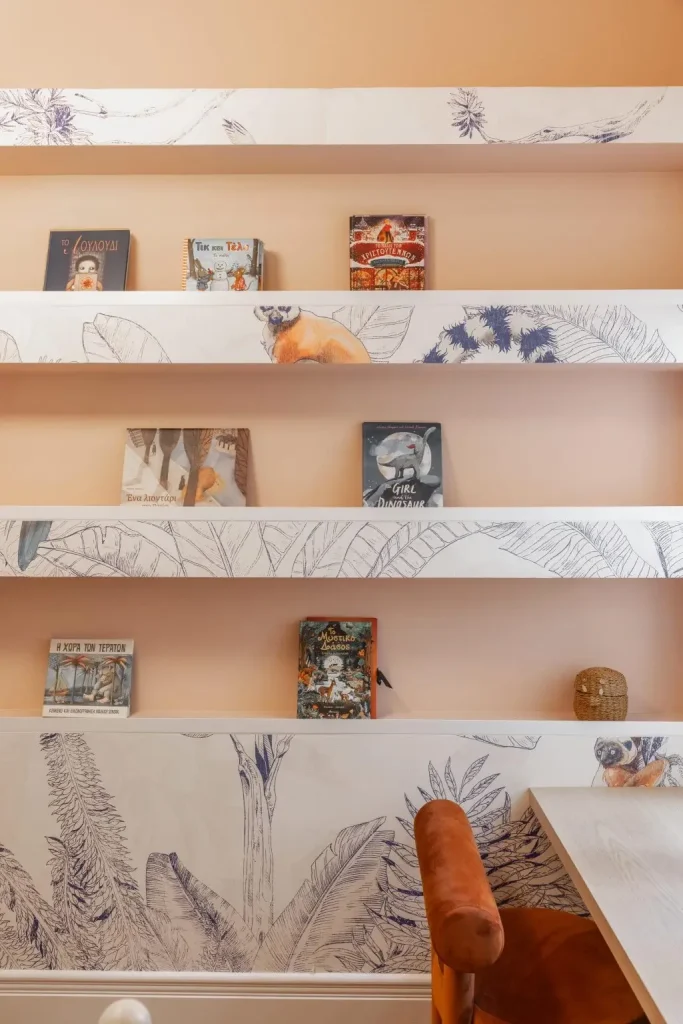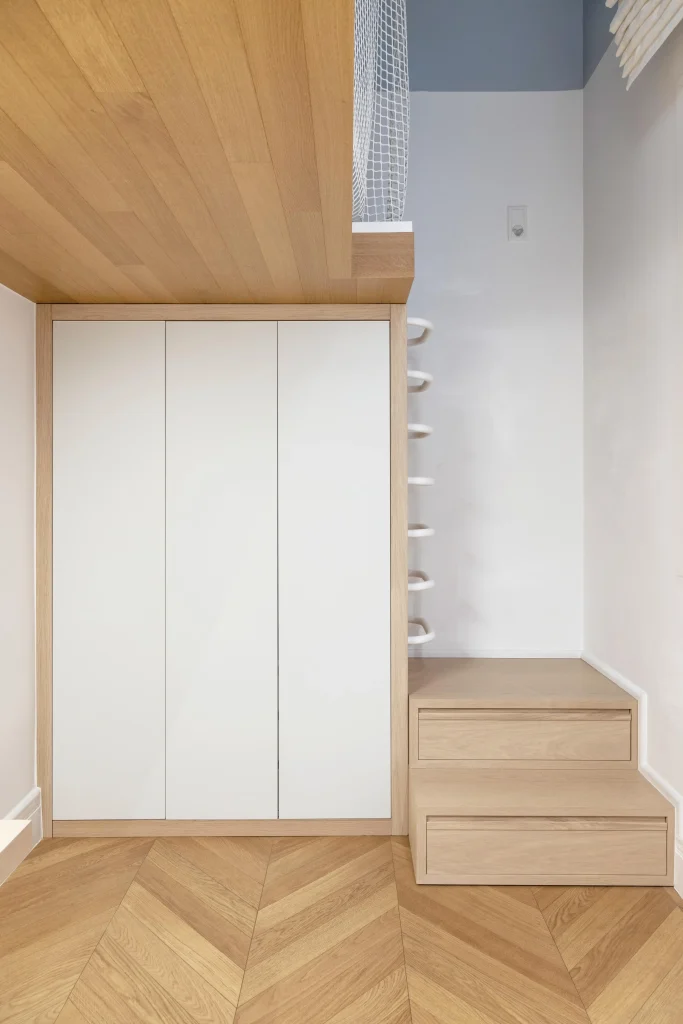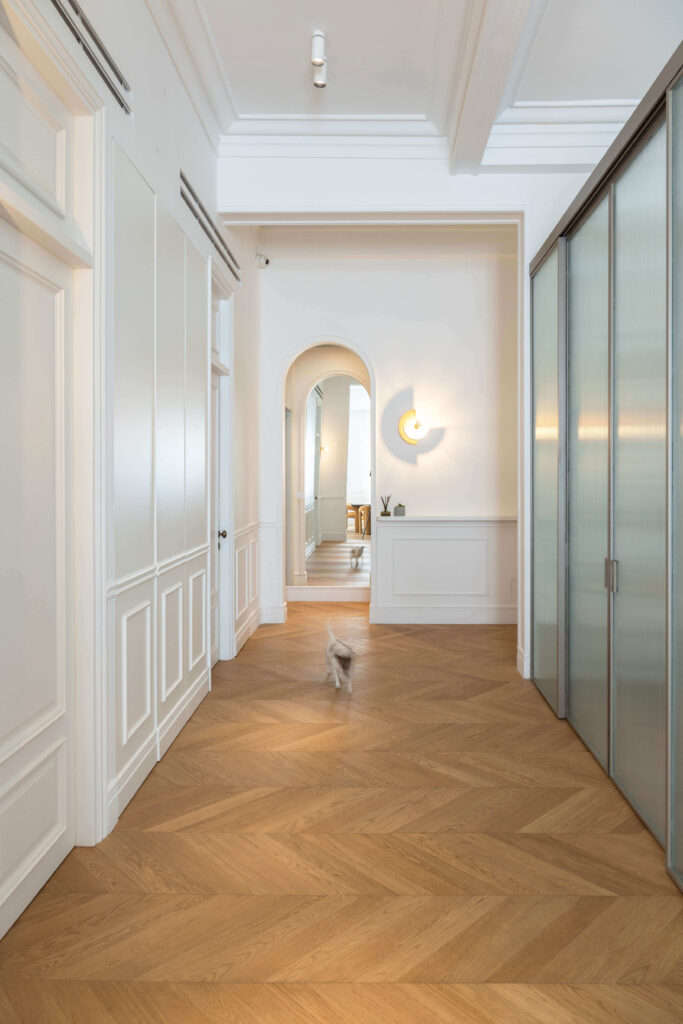
The open plan space of the kitchen and the living room is bisected by the island, which is covered in white corian, corrugated on the sides. The dining table is joined with the island and this unified construction becomes the centerpiece of the space. The office space -in close proximity to the patio- is divided by the rest of the kitchen and the living room space by a metal framed glass construction that allows natural light to penetrate into the house.
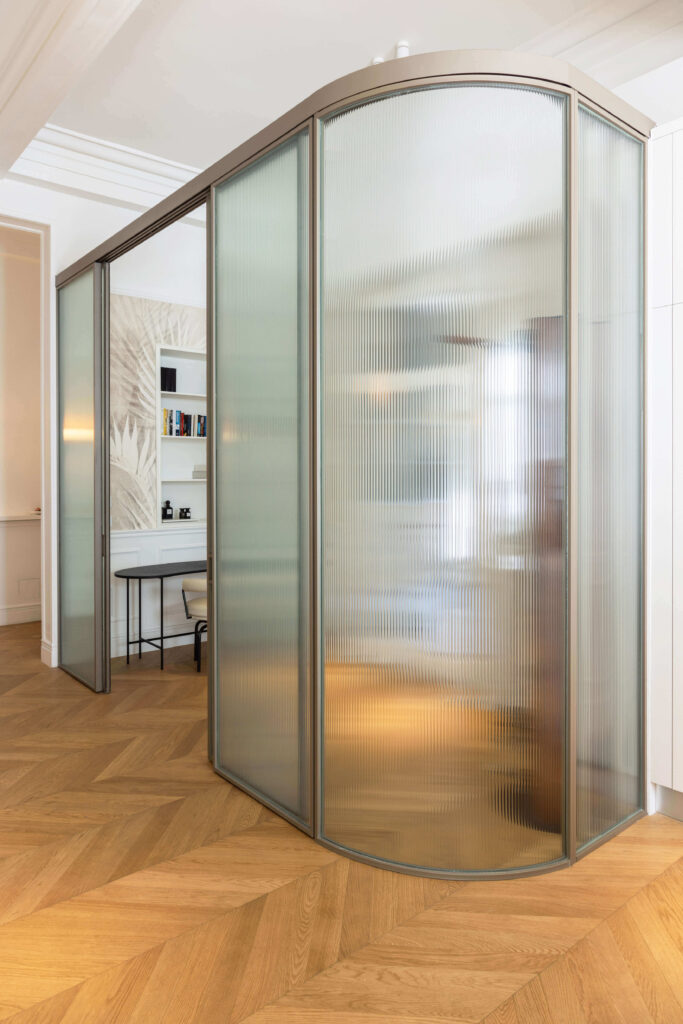
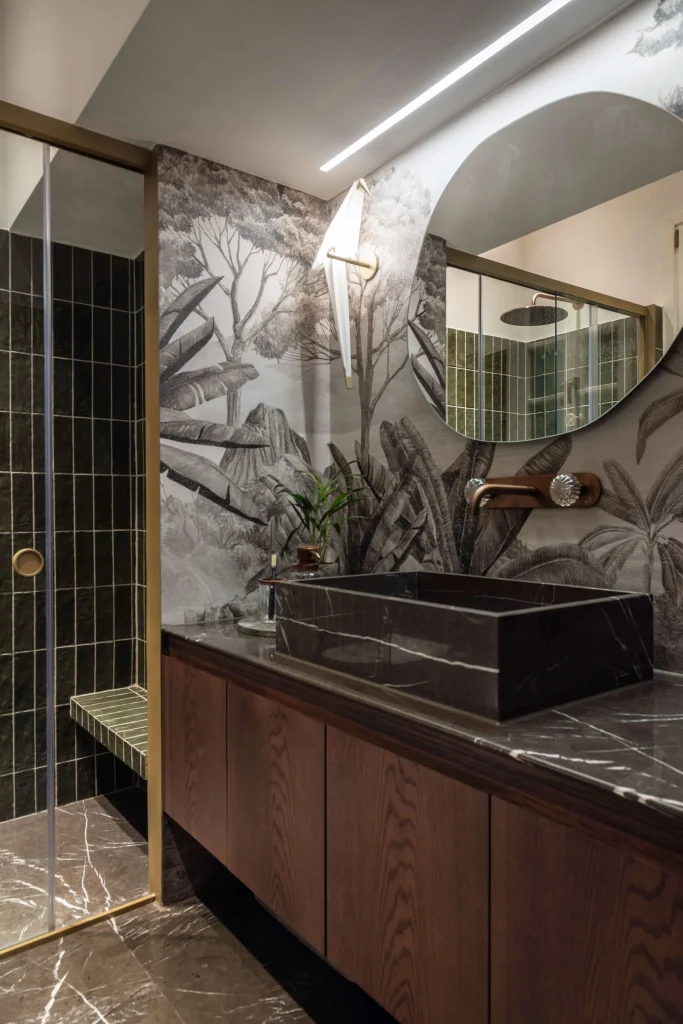
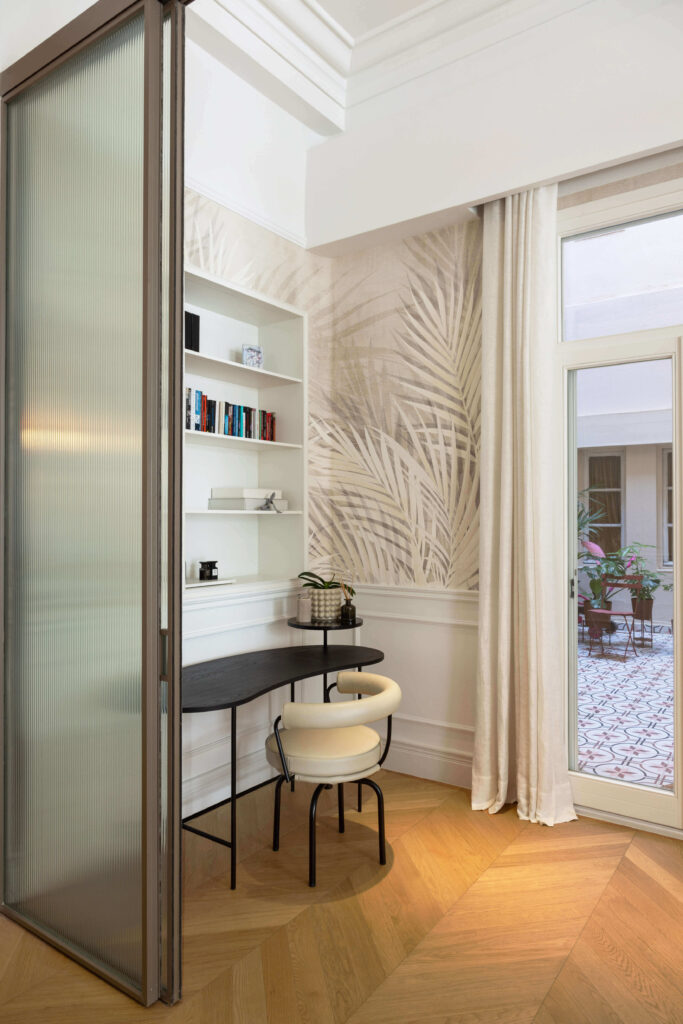

The patio, a characteristic feature for the buildings of this period, is a source of light and greenery. Its decorative cement tiles create a patterned rug that unfolds in all the balconies and reflects the fusion of cultural inspiration between the East and the West, both so prominent in the history of the city.
The interiors are covered with a classic chevron parquet, one of the oldest flooring designs in Europe, a symbol of careful craftsmanship. In the bedroom the double height closet is made out of metal and glass, just as the shower doors in the en suite bathroom. This last one is covered with a white marble, a dominant background for the free standing bathtub.
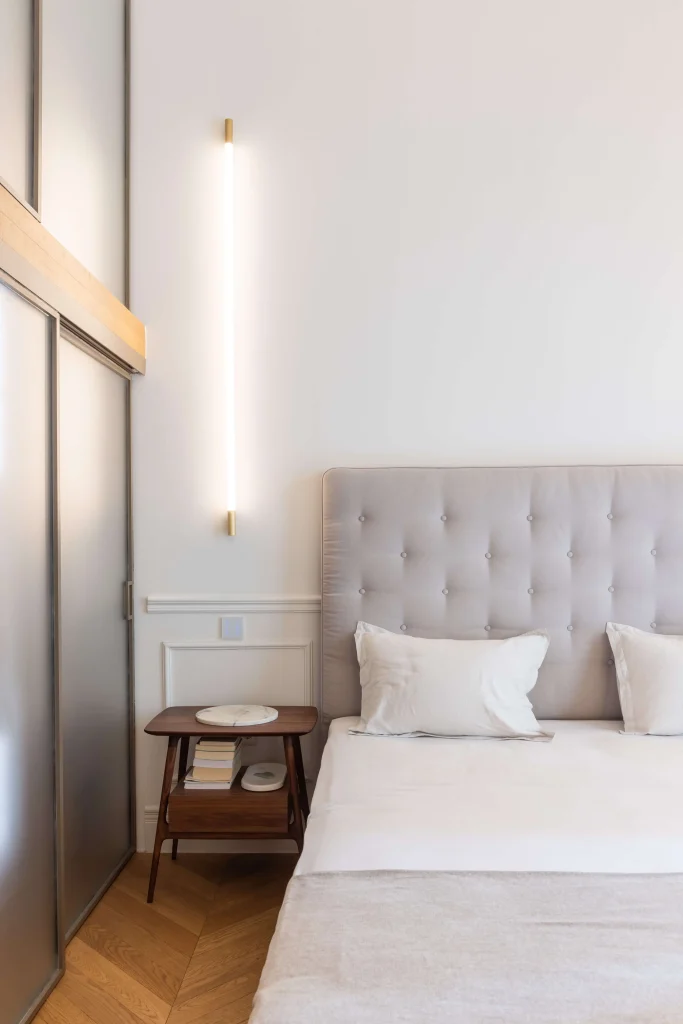
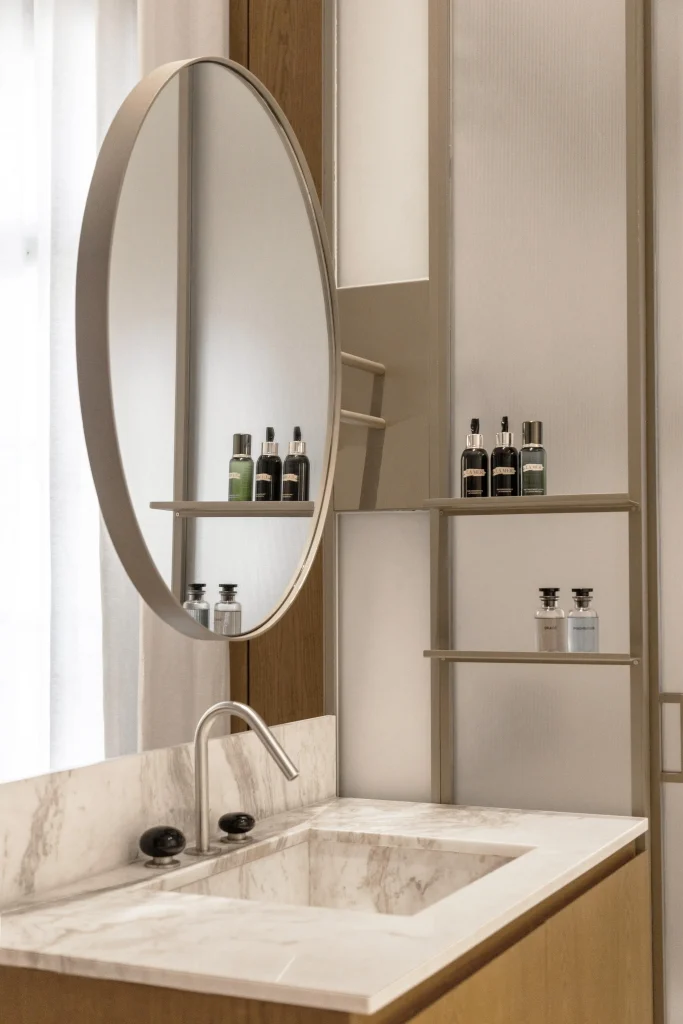
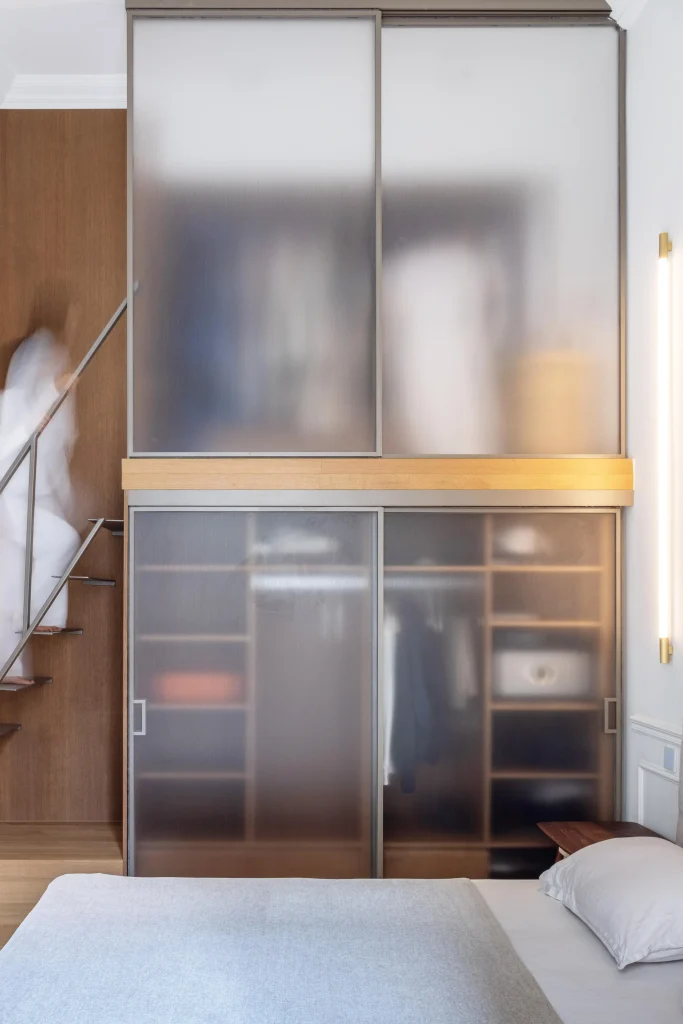
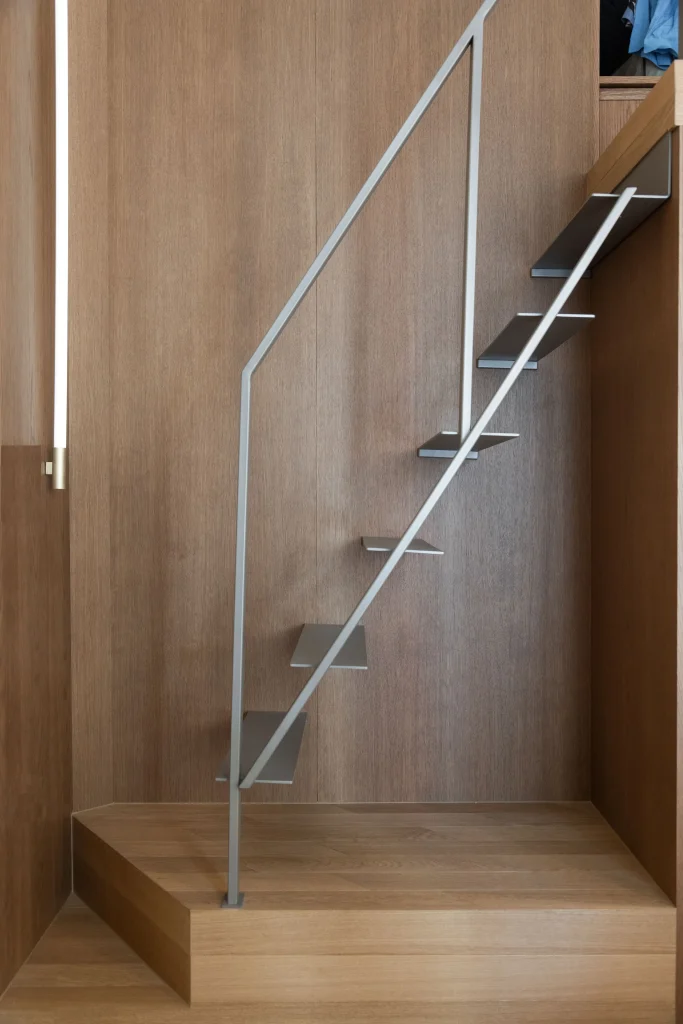
In the initial plan of the house there was a smoking room next to the living room and the air shaft, an essential feature of Victorian houses that soon became popular to other countries as well. The present need of having 3 bedrooms urged us to transform the old smoking room into a bedroom for one of the family’s kids. The space is small and oblong and had to be developed in height. A metal platform covered in wood was installed in 1.95m above the floor level and on top of it the bed was placed. Underneath the platform were developed a wardrobe, an office and a bookshelf.

